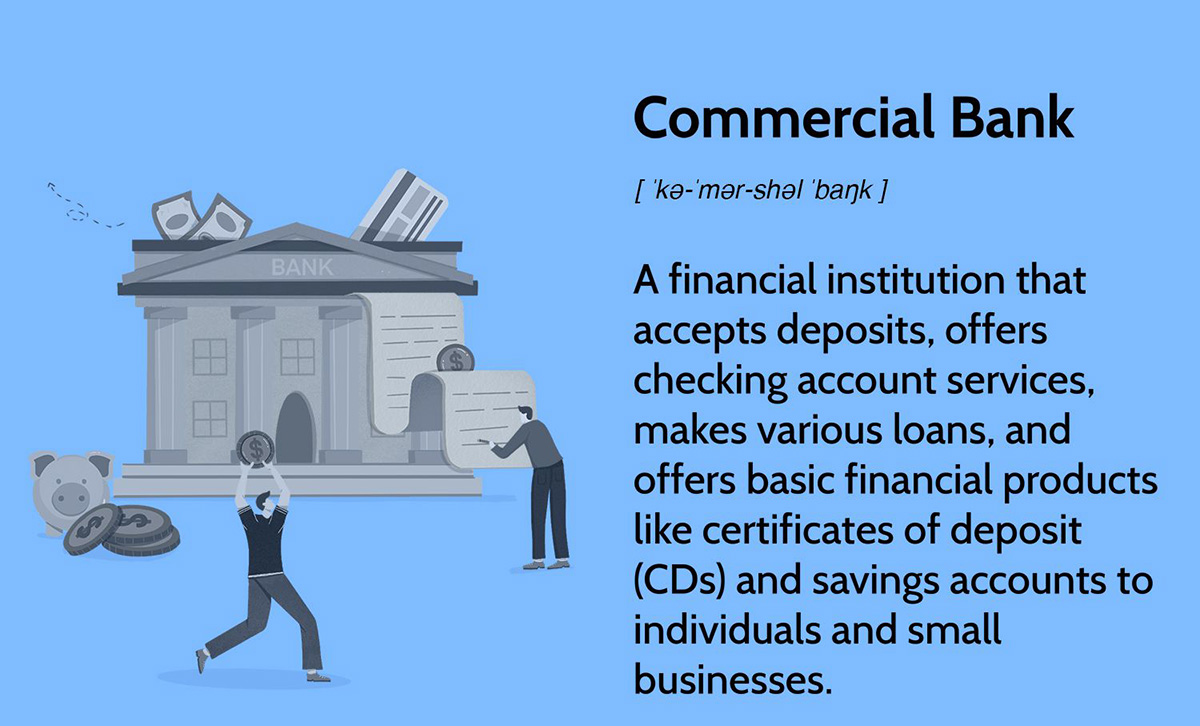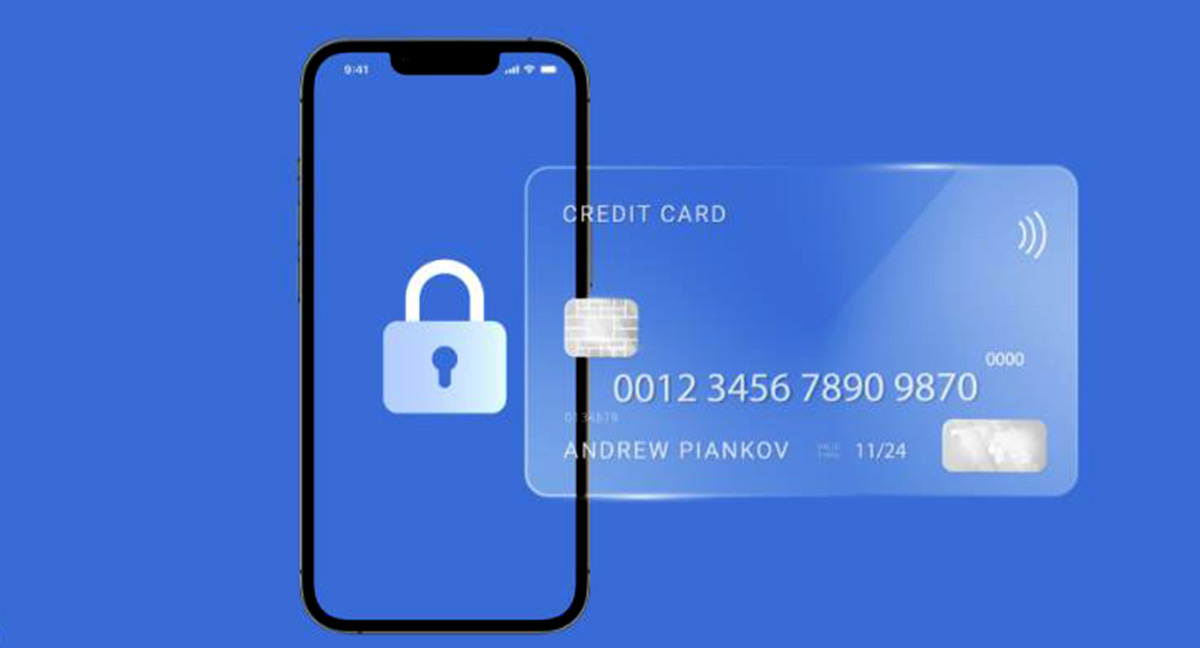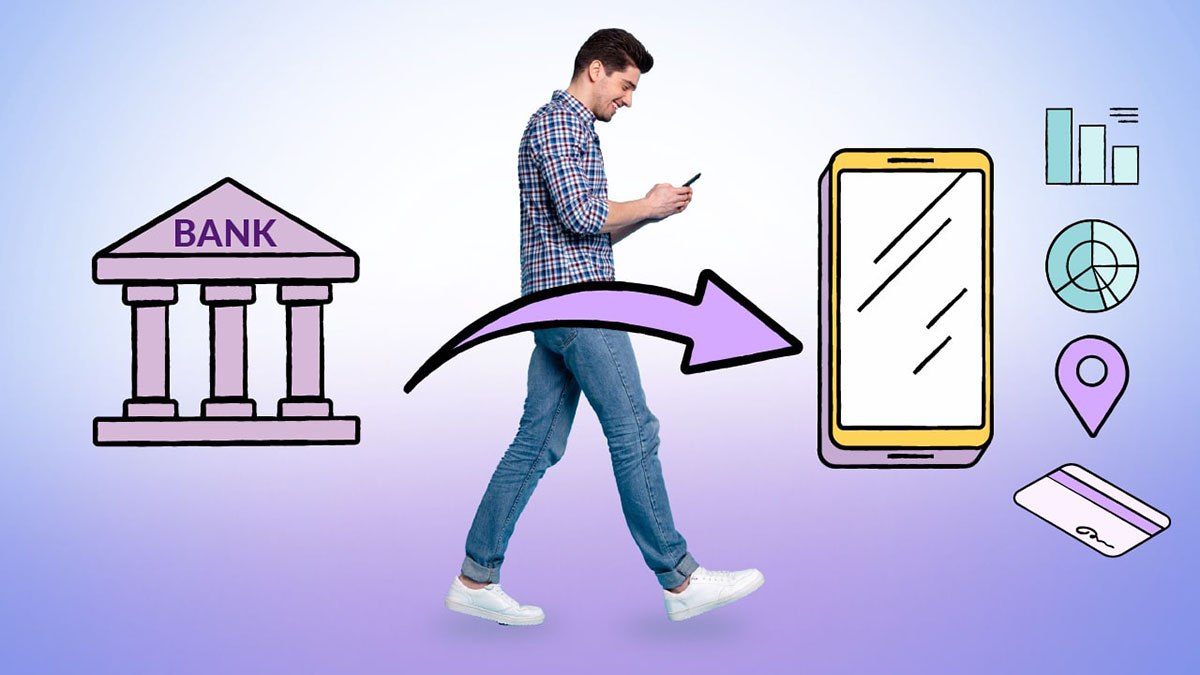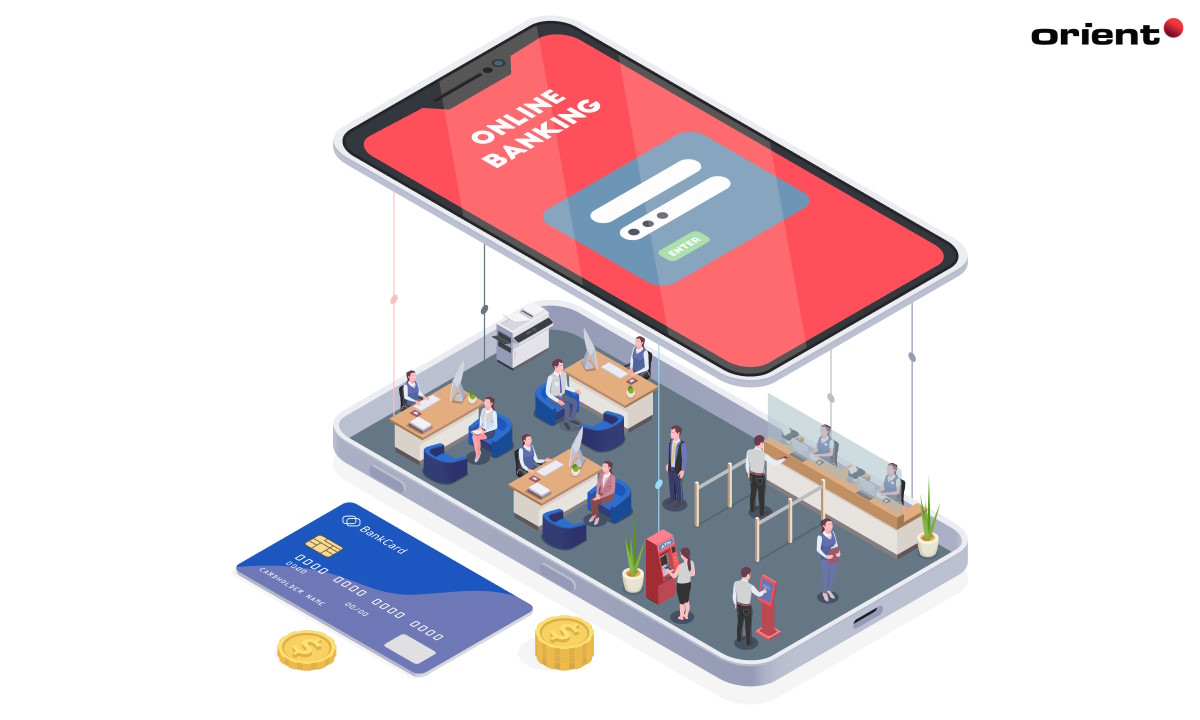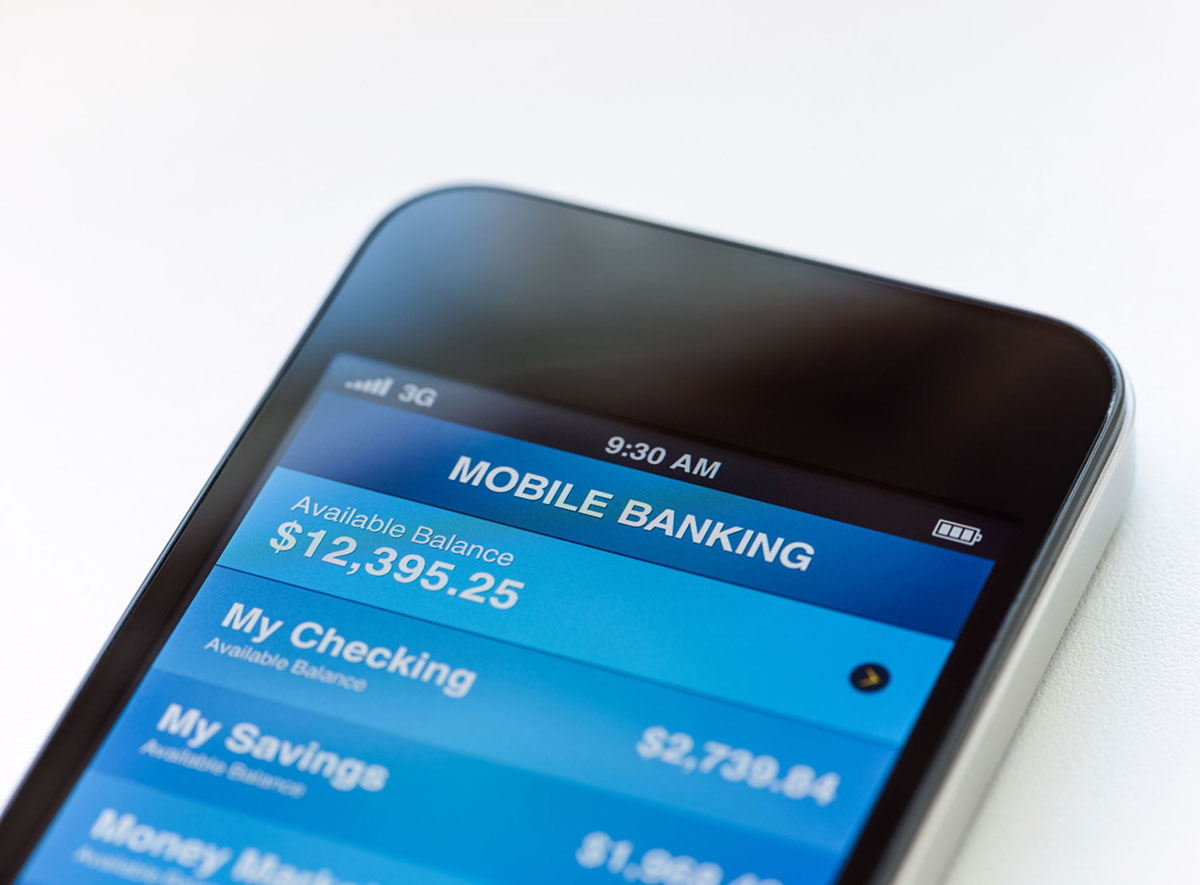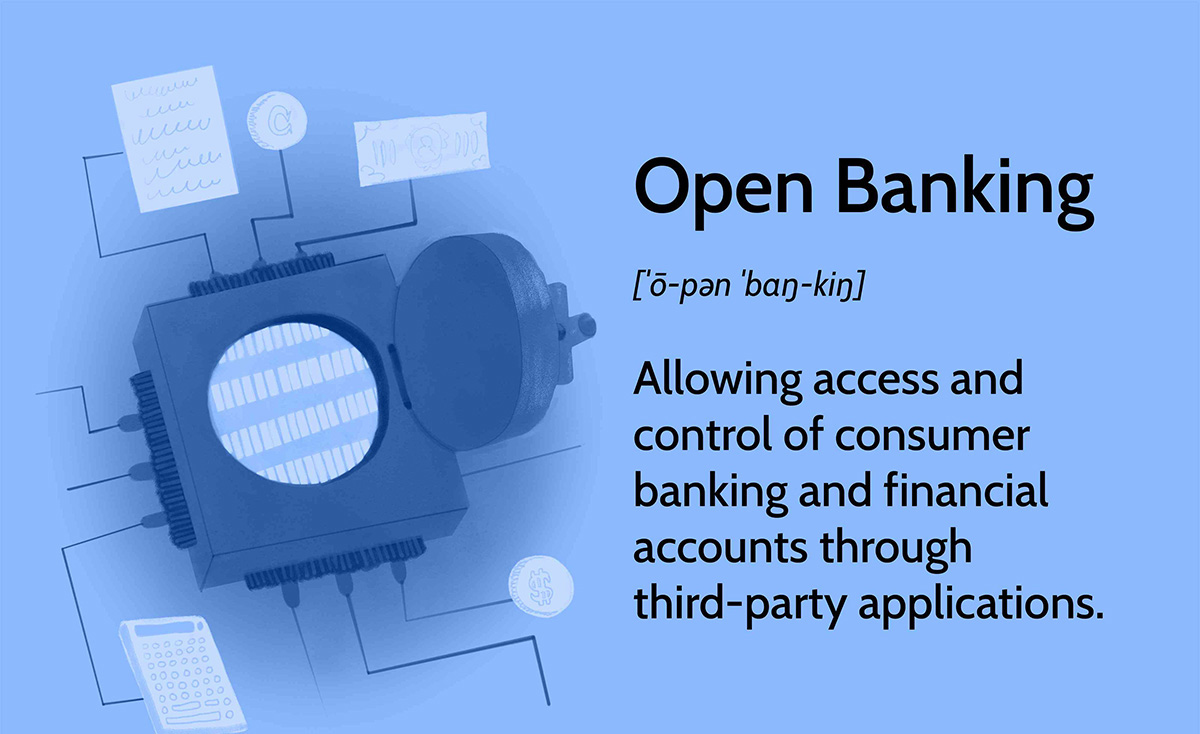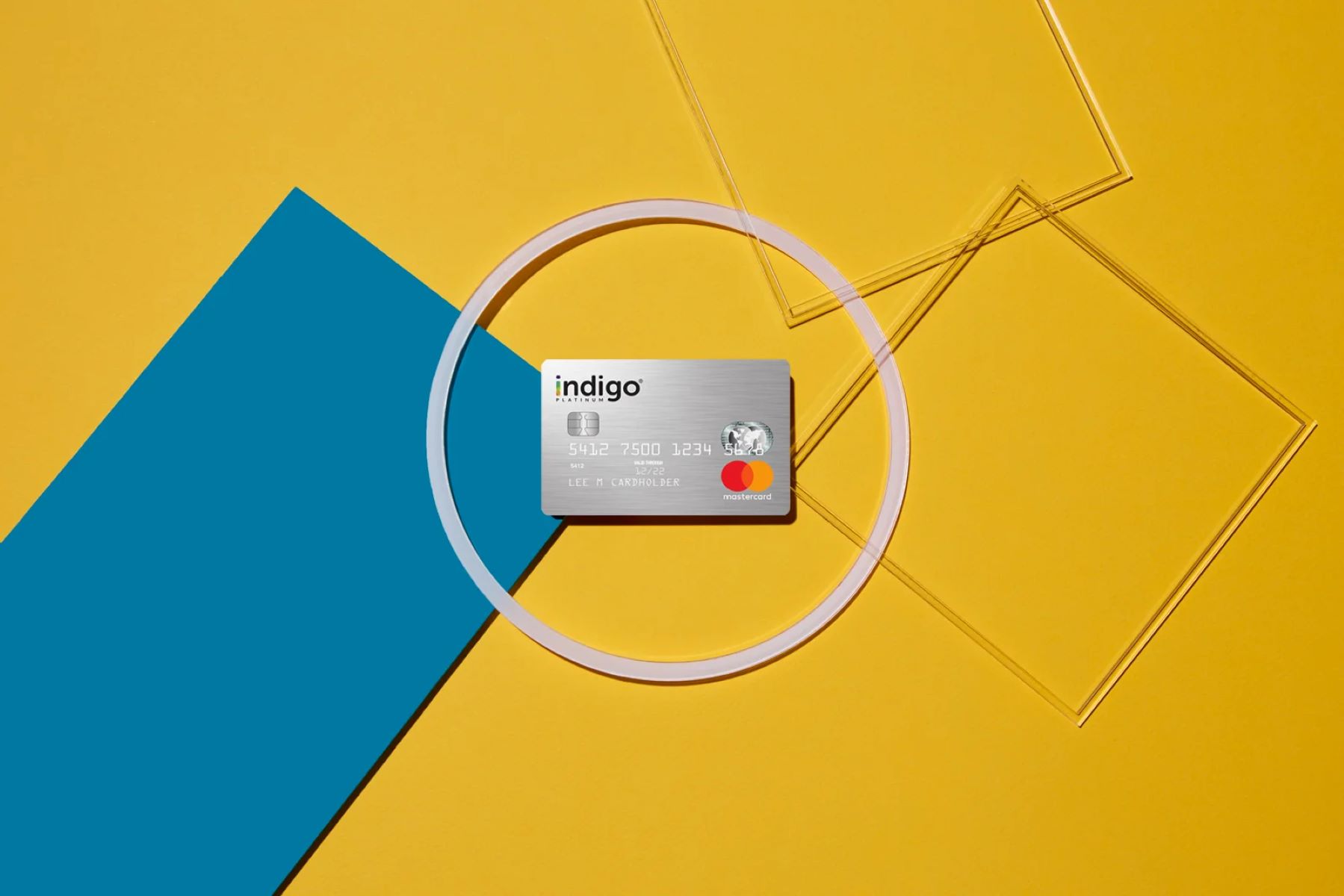

Finance
Why Mobile Banking
Modified: December 30, 2023
Maximize your financial convenience with mobile banking. Access your accounts, make transactions, and stay in control of your finances anytime, anywhere. Save time and simplify your banking experience on your smartphone.
(Many of the links in this article redirect to a specific reviewed product. Your purchase of these products through affiliate links helps to generate commission for LiveWell, at no extra cost. Learn more)
Table of Contents
Introduction
Mobile banking has revolutionized the way we manage our finances, providing a convenient and efficient solution for banking on the go. With the increasing popularity of smartphones and the widespread availability of internet access, mobile banking has become an essential tool for individuals and businesses alike.
Gone are the days of standing in long queues at the bank or rushing to make it before the closing time. With just a few taps on your smartphone, you can now access your accounts, transfer funds, pay bills, and even apply for loans, all from the comfort of your own home or while on the move.
The convenience of mobile banking is unparalleled. Whether you need to check your account balance before making a purchase, transfer money to a friend in need, or track your expenses, it can all be done with ease through your mobile device. No more waiting for banking hours or being restricted by geographic location.
Not only does mobile banking provide convenience, but it also offers a range of additional benefits that make it an attractive option for individuals and businesses alike. In this article, we will explore these benefits in more detail, from accessibility and cost-effectiveness to security measures and integration with other financial applications.
Mobile banking has transformed the way we manage our finances. It has made banking more accessible, flexible, and efficient, empowering us to take control of our financial well-being anytime, anywhere. Whether you are a tech-savvy millennial or a retiree embracing new technologies, mobile banking has something to offer everyone.
In the following sections, we will delve into the various advantages of mobile banking, exploring how it has revolutionized the financial landscape and how it is shaping the future of banking.
Convenience of Mobile Banking
One of the key advantages of mobile banking is the unparalleled convenience it offers to users. With just a few taps on your smartphone, you can access your bank accounts and carry out a range of financial transactions without the need to visit a physical branch or use a computer.
Gone are the days of standing in long queues at the bank or rushing to make it before the closing time. With mobile banking, you have the freedom to manage your finances on your own terms, at any time that is convenient for you. Whether you are relaxing at home, sitting in a coffee shop, or even on vacation, as long as you have an internet connection, you can stay connected to your financial institution and have full control over your money.
Mobile banking allows you to perform a wide range of transactions with ease. You can check your account balance, view transaction history, transfer funds between accounts, pay bills, and even deposit checks using your smartphone’s camera. This level of convenience saves you time and effort, making everyday banking tasks simpler and more efficient.
Furthermore, mobile banking eliminates the need to carry physical wallets filled with cash and cards. Through mobile payment services and digital wallets, you can make secure and contactless payments at various merchants. So, whether you are paying for groceries, dining out with friends, or shopping online, mobile banking provides a seamless and convenient payment method.
Another aspect of convenience in mobile banking is the availability of personalized notifications and alerts. You can set up notifications for account balances, transactions, and upcoming bill payments, ensuring that you stay up to date with your financial activities and avoid any surprises. This proactive approach keeps you in control of your finances and helps you make informed decisions.
Overall, the convenience of mobile banking cannot be overstated. It puts the power of financial management in the palm of your hand, enabling you to access your accounts and carry out transactions anytime, anywhere. With mobile banking, you no longer have to fit your schedule around the bank’s hours or wait in long queues – instead, banking adapts to fit your lifestyle.
Accessibility and Availability
Mobile banking has greatly enhanced the accessibility and availability of banking services. With a smartphone and an internet connection, you can access your bank accounts and perform a wide range of financial transactions regardless of your location or the time of day.
Gone are the days of being limited to physical bank branches and their operating hours. With mobile banking, you have 24/7 access to your accounts and can carry out transactions at any time that is convenient for you. Whether you are a busy professional, a student, or someone with mobility constraints, mobile banking ensures that you can manage your finances on your own terms.
Additionally, mobile banking has opened up banking services to individuals who may not have had access in the past. Traditional banking methods often require customers to have a physical presence at a branch, which can be challenging for those living in remote areas or with limited mobility. Mobile banking bridges this gap by allowing users to access financial services from anywhere in the world, as long as there is an internet connection.
Furthermore, mobile banking has made banking services available to the unbanked and underbanked populations. In many developing countries, access to traditional banking services is limited, making it difficult for individuals to save money, access credit, and conduct basic financial transactions. However, with the rise of mobile banking, individuals can now use their smartphones to access a range of financial services, including digital wallets, microloans, and money transfers.
The availability of mobile banking is not just limited to smartphones. With the rise of feature phones and USSD (Unstructured Supplementary Service Data) technology, individuals with basic mobile phones can also access basic banking services. These services are often text-based and do not require a smartphone or internet connection, making them accessible to a wider range of individuals.
In summary, mobile banking brings banking services to the fingertips of individuals around the world. It breaks down barriers of time, distance, and physical presence, providing access to financial services anytime, anywhere. Whether you are in a bustling city or a remote village, mobile banking ensures that banking services are available and accessible to all.
Cost-effectiveness
Mobile banking offers significant cost savings for both financial institutions and customers, making it a cost-effective solution for managing finances. By reducing the need for physical branches, mobile banking reduces overhead costs for banks, which can lead to cost savings that are passed on to customers in the form of lower fees and better interest rates.
For customers, mobile banking eliminates the need for travel and transportation costs associated with visiting a physical bank branch. Instead of spending time and money on commuting, customers can easily access their accounts and perform transactions from the comfort of their own homes or wherever they may be. This cost-saving benefit is particularly beneficial for individuals living in rural or remote areas, who may have limited access to physical banks.
Furthermore, mobile banking reduces the reliance on paper-based processes and documents. With digital statements, electronic fund transfers, and online bill payments, customers can reduce their paper usage and contribute to a greener, more sustainable banking system. This not only saves costs on printing and mailing, but it also benefits the environment.
In addition to cost savings, mobile banking also offers customers easy access to a wealth of financial information and tools. Through mobile banking apps, customers can track expenses, set budgeting goals, and monitor their overall financial health. These tools empower individuals to make more informed financial decisions, potentially leading to better money management and long-term savings.
Moreover, mobile banking provides customers with access to a wide range of financial products and services. By comparing rates and offerings from different banks and financial institutions, customers can find the most competitive options for loans, credit cards, and savings accounts. This level of transparency and accessibility allows customers to make choices that align with their financial goals and budget.
Overall, mobile banking presents a cost-effective solution for both financial institutions and customers. It reduces operational costs, eliminates travel expenses, promotes sustainability, and provides access to an array of financial tools and products. By leveraging mobile banking services, individuals can effectively manage their finances while enjoying cost savings and an enhanced banking experience.
Security Measures in Mobile Banking
Security is a top concern for both financial institutions and customers when it comes to mobile banking. In order to protect sensitive financial information and ensure the safety of transactions, robust security measures are implemented in mobile banking applications and platforms.
One of the key security features in mobile banking is encryption. Encryption technology scrambles the data transmitted between the mobile device and the banking server, making it virtually impossible for unauthorized individuals to intercept and decipher the information. This ensures that customer data, including account numbers, passwords, and transaction details, remains secure and confidential.
Mobile banking apps also implement strong authentication measures to verify the identity and authorization of users. This typically involves the use of multifactor authentication, which requires users to provide more than one form of identification, such as a password, fingerprint, or facial recognition. This adds an extra layer of security, making it more difficult for unauthorized individuals to gain access to the mobile banking app.
Another important security measure in mobile banking is the use of secure networks. Financial institutions prioritize the use of secure protocols and encrypted connections to protect the transmission of data between the mobile device and the banking server. This helps prevent man-in-the-middle attacks and ensures that sensitive information is not intercepted or tampered with during transmission.
In addition to these technical security measures, mobile banking apps often provide features that allow users to monitor and control their account activity. This includes the ability to receive real-time notifications for transactions, set spending limits, and remotely lock or deactivate their mobile banking app in case of loss or theft of the device. These features empower users to take immediate action in case of suspicious activity and provide an added layer of protection.
Financial institutions also work diligently to stay ahead of emerging security threats by regularly updating and patching their mobile banking apps. This ensures that any vulnerabilities or weaknesses in the security system are quickly identified and addressed. Regular security audits and testing are conducted to evaluate the effectiveness of the security measures and enhance the overall security posture.
It is important for mobile banking users to also play an active role in ensuring their own security. This includes regularly updating their mobile banking app, using strong and unique passwords, and being cautious of phishing attempts or suspicious links. By following these best practices, users can further enhance the security of their mobile banking experience.
Overall, mobile banking is built upon a foundation of robust security measures. From encryption to secure networks and multifactor authentication, financial institutions invest significant resources to ensure the safety and integrity of mobile banking transactions. With the right security measures in place, users can have confidence in the security of their financial information while enjoying the convenience and accessibility of mobile banking.
Features and Services
Mobile banking offers a plethora of features and services that enhance the banking experience and provide customers with a wide range of capabilities. These features and services go beyond basic account management and enable users to conveniently and efficiently handle various financial tasks right from their mobile devices.
One of the key features of mobile banking is the ability to view account balances and transaction history in real-time. This allows users to stay updated on their financial status and easily track income and expenses. With just a few taps, users can quickly check their account balances before making a purchase or making a financial decision.
Mobile banking also enables users to transfer funds between accounts with ease. Whether it’s moving money between checking and savings accounts or sending money to friends and family, mobile banking provides a simple and convenient way to initiate transfers. Users can also set up recurring transfers, making it effortless to automate their savings or bill payments.
Another useful feature of mobile banking is the ability to pay bills directly from the app. Users can link their accounts to service providers and easily make payments for utilities, credit cards, and other bills. This eliminates the need for writing checks or visiting bill payment centers, saving time and effort.
In addition to basic banking features, mobile banking apps often provide access to advanced services such as mobile deposits. Users can easily deposit checks using their smartphone’s camera, eliminating the need to visit a physical bank branch. This feature is particularly convenient for those who receive checks regularly or live in areas where bank branches are not easily accessible.
Mobile banking also integrates with other financial applications and services, enhancing its functionality. Users can link their mobile banking app with personal finance management apps to get a comprehensive overview of their finances. They can track their spending habits, set budgets, and receive personalized financial recommendations tailored to their individual needs.
Furthermore, mobile banking apps often offer features such as card controls, allowing users to lock or unlock their debit or credit cards, set spending limits, and receive instant notifications for every transaction made with their cards. This gives users a greater sense of security and control over their card usage.
Moreover, mobile banking provides access to customer support and assistance right from the app. Users can contact customer service representatives via chat or phone for immediate help with their banking inquiries or issues. This eliminates the need to visit a physical branch or wait for extended periods to receive assistance.
Overall, mobile banking offers a wide range of features and services that empower users to manage their finances efficiently. From viewing account balances and transferring funds to paying bills and depositing checks, mobile banking provides a comprehensive suite of tools that simplify financial tasks and enhance the banking experience.
Integration with Other Financial Applications
Mobile banking has evolved to provide seamless integration with various other financial applications, enhancing the overall banking experience for users. This integration allows customers to access a wide range of financial services and tools from within their mobile banking app, making it a one-stop solution for all their financial needs.
One common integration is with personal finance management applications. Mobile banking apps often offer the ability to link and sync with popular personal finance apps, allowing users to aggregate all their financial information in one place. This integration provides users with a comprehensive view of their financial health, including account balances, spending patterns, and budgeting goals.
By integrating with personal finance management apps, users can track their expenses, set savings goals, and receive personalized recommendations for optimizing their finances. This integration provides a holistic approach to financial management, enabling users to make more informed decisions and achieve their financial goals more effectively.
Additionally, mobile banking apps can integrate with investment platforms, providing users with the ability to monitor and manage their investment portfolios. Users can view their investment holdings, track performance, and execute trades directly from their mobile banking app. This integration enhances convenience and provides a centralized platform for managing both banking and investment activities.
Integration with payment platforms and digital wallets is another valuable feature of mobile banking. Users can link their mobile banking app to services like Apple Pay, Google Pay, or Samsung Pay, allowing them to make secure and contactless payments using their smartphones. This integration eliminates the need to carry physical cards and provides a convenient and secure payment method.
Moreover, mobile banking often integrates with peer-to-peer payment services, enabling users to send and receive money seamlessly. Whether it’s splitting a bill with friends, repaying a loan, or sending money to family members, users can initiate peer-to-peer transfers directly from their mobile banking app, eliminating the need for third-party payment apps or cash transactions.
Integration with digital lending platforms is another valuable aspect of mobile banking. Users can review loan options, apply for loans, and track the progress of their loan applications through their mobile banking app. This integration streamlines the loan application process, making it more convenient and efficient for users seeking financing.
Furthermore, mobile banking apps can integrate with financial advisory services, providing users with personalized recommendations and guidance on their financial decisions. Through this integration, users can access financial planning tools, receive investment advice, and get insights into financial markets, all within their mobile banking app.
By integrating with these various financial applications, mobile banking provides users with a comprehensive financial ecosystem on their mobile devices. It enables users to access a wide range of services, manage their finances effectively, and make informed financial decisions, all from one centralized platform.
Customer Support and Assistance
Mobile banking not only offers convenience and accessibility but also provides excellent customer support and assistance to users. Financial institutions recognize the importance of providing a seamless banking experience and have implemented robust customer support features within their mobile banking apps.
One of the key features of mobile banking is the ability to access customer support directly from the app. Users can easily find and contact customer service representatives through in-app chat or phone support. This eliminates the need to visit a physical branch or wait for extended periods on hold for assistance.
The in-app chat feature allows users to communicate with customer service representatives in real-time, receiving immediate responses to their queries or concerns. This instant response time enhances the overall customer experience and ensures that users can quickly resolve any issues or obtain the necessary assistance.
Moreover, mobile banking apps often have built-in knowledge bases or FAQ sections, providing users with self-help resources. Users can find answers to common questions, access step-by-step guides, and learn how to navigate various features of the app. This empowers users to troubleshoot minor issues independently before reaching out to customer support, saving time and ensuring a smoother banking experience.
In addition to basic customer support, mobile banking apps also offer features that enhance security and provide users with peace of mind. Users can receive real-time account activity notifications, ensuring that they are alerted to any unusual or suspicious transactions. This proactive approach to security allows users to take immediate action if they identify any potentially fraudulent activity on their accounts.
Furthermore, mobile banking apps often provide features that enable users to manage card security. Users can easily report lost or stolen cards through the app, ensuring that the cards are immediately blocked to prevent unauthorized use. This fast and convenient card management feature offers users a sense of security and control over their accounts.
Mobile banking apps also often incorporate customer feedback channels, allowing users to provide feedback and suggestions for improvements directly within the app. This demonstrates that financial institutions value their customers’ opinions and are constantly striving to enhance the mobile banking experience based on user feedback.
Overall, mobile banking offers robust customer support and assistance features to ensure that users can easily access help and resolve any issues they may encounter. With in-app chat support, knowledge bases, real-time notifications, and card management features, users can confidently navigate the mobile banking app, knowing that customer support is just a few taps away.
Future of Mobile Banking
The future of mobile banking looks promising, with continued advancements in technology and changing consumer behavior. As smartphones become more integrated into our daily lives, mobile banking is expected to play an even more significant role in the financial landscape.
One of the key areas of growth in the future of mobile banking is the adoption of cutting-edge technologies such as artificial intelligence (AI) and machine learning (ML). These technologies can enhance the personalization and customization of banking services, providing users with tailored financial advice and recommendations based on their individual needs and preferences. AI-powered chatbots and virtual assistants can also provide instant assistance and support to users, creating a more interactive and personalized banking experience.
Furthermore, the evolution of mobile banking will likely involve the adoption of biometric authentication methods, such as facial recognition and fingerprint scanning. These secure and convenient methods of authentication offer a higher level of security compared to traditional passwords or PINs, reducing the risk of fraud and unauthorized access to accounts.
As the Internet of Things (IoT) continues to expand, mobile banking is expected to integrate with smart devices and wearables. Users will be able to perform banking tasks and receive account updates through devices such as smartwatches, connected cars, and voice-activated home assistants. This seamless integration will make banking even more accessible and convenient for users, allowing them to manage their finances on various devices without any limitations.
Mobile banking is also likely to see advancements in the area of mobile payments. With the increasing popularity of contactless payments and digital wallets, mobile banking will continue to integrate with payment platforms, making it easier for users to make secure and convenient payments using their smartphones. Peer-to-peer payments will also become more seamless and accessible, further reducing reliance on cash transactions.
Another aspect of the future of mobile banking is the continued focus on cybersecurity and data privacy. As the threat landscape evolves, financial institutions will invest more in advanced security measures to protect customer data and prevent fraud. This includes implementing multi-factor authentication, biometric security features, and real-time fraud detection algorithms to ensure the safety and security of mobile banking transactions.
Moreover, mobile banking will likely expand its services beyond traditional banking functions. Integration with other sectors, such as insurance and investment platforms, will provide users with a comprehensive financial ecosystem. Users will be able to manage various aspects of their financial life, including insurance policies, investment portfolios, and retirement accounts, all within their mobile banking app.
Overall, the future of mobile banking holds great potential. With advancements in technology, increased personalization, enhanced security, and seamless integration with other sectors, mobile banking will continue to revolutionize the way we manage our finances. It will offer users unparalleled convenience, accessibility, and innovative solutions to meet their evolving financial needs.
Conclusion
Mobile banking has transformed the way we manage our finances, providing convenience, accessibility, and a wide range of features and services right at our fingertips. With just a few taps on our smartphones, we can access our accounts, transfer funds, pay bills, and even apply for loans, all from the comfort of our own homes or while on the move.
The convenience of mobile banking cannot be understated. It allows us to manage our finances on our own terms, anytime and anywhere. No longer do we need to fit our schedules around the bank’s hours or stand in long queues; instead, banking adapts to fit our lifestyles.
In addition to convenience, mobile banking offers cost savings for both financial institutions and customers. It reduces overhead costs for banks, leading to lower fees and better interest rates for customers. Moreover, mobile banking eliminates the need for travel and transportation expenses associated with visiting physical bank branches.
Security measures in mobile banking ensure the safety of our financial information and transactions. Encryption, strong authentication, and secure networks protect our data from unauthorized access, while features such as real-time notifications and card controls empower us to take immediate action in case of suspicious activity.
The integration of mobile banking with other financial applications enhances our banking experience. We can easily link our mobile banking app with personal finance management apps, investment platforms, payment platforms, and more. This integration provides us with a comprehensive financial ecosystem, empowering us to manage our finances more efficiently and make informed financial decisions.
The future of mobile banking looks promising, with the adoption of advanced technologies, biometric authentication, IoT integration, and expansion into other sectors. These developments will further enhance convenience, customization, and security in mobile banking, revolutionizing the way we interact with our finances.
In conclusion, mobile banking has revolutionized the financial landscape, offering unparalleled convenience, accessibility, and a wide range of features and services. It has become a powerful tool for individuals and businesses, empowering us to take control of our financial well-being anytime, anywhere. As technology continues to advance, mobile banking will continue to evolve, providing even greater flexibility, personalized experiences, and innovative solutions to meet our ever-changing financial needs.
